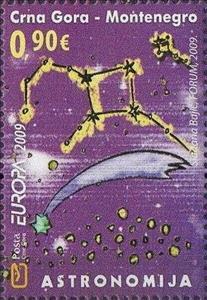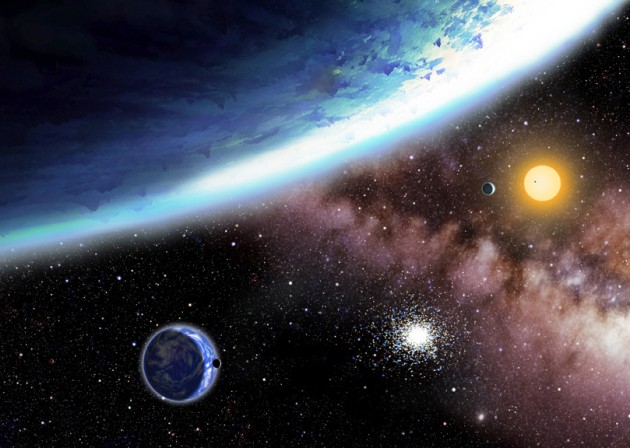Stamp: Europa (C.E.P.T.) 2009 - Astronomy (Montenegro 2009)
Europa (C.E.P.T.) 2009 - Astronomy (Montenegro 2009)
16 April (Montenegro ) within release Europa (C.E.P.T.) 2009 - Astronomy goes into circulation Stamp Europa (C.E.P.T.) 2009 - Astronomy face value 0.90 Euro
| Stamp Europa (C.E.P.T.) 2009 - Astronomy in catalogues | |
|---|---|
| Michel: | Mi: ME 209 |
Stamp is square format.
Stamp from souvenir sheet.Also in the issue Europa (C.E.P.T.) 2009 - Astronomy:
- Souvenir Sheet - Europa (C.E.P.T.) 2009 - Astronomy face value 1.50;
- Mini Sheet - Europa (C.E.P.T.) 2009 - Astronomy (KB) face value 8*0.90;
- Mini Sheet - Europa (C.E.P.T.) 2009 - Astronomy (KB) face value 8*0.60;
- Stamp - Europa (C.E.P.T.) 2009 - Astronomy face value 0.60;
- Stamp - Europa (C.E.P.T.) 2009 - Astronomy face value 0.90;
Stamp Europa (C.E.P.T.) 2009 - Astronomy it reflects the thematic directions:
Astronomy is a natural science that studies celestial objects and the phenomena that occur in the cosmos. It uses mathematics, physics, and chemistry in order to explain their origin and their overall evolution. Objects of interest include planets, moons, stars, nebulae, galaxies, meteoroids, asteroids, and comets. Relevant phenomena include supernova explosions, gamma ray bursts, quasars, blazars, pulsars, and cosmic microwave background radiation. More generally, astronomy studies everything that originates beyond Earth's atmosphere. Cosmology is a branch of astronomy that studies the universe as a whole. .
A comet is an icy, small Solar System body that warms and begins to release gases when passing close to the Sun, a process called outgassing. This produces an extended, gravitationally unbound atmosphere or coma surrounding the nucleus, and sometimes a tail of gas and dust gas blown out from the coma. These phenomena are due to the effects of solar radiation and the outstreaming solar wind plasma acting upon the nucleus of the comet. Comet nuclei range from a few hundred meters to tens of kilometers across and are composed of loose collections of ice, dust, and small rocky particles. The coma may be up to 15 times Earth's diameter, while the tail may stretch beyond one astronomical unit. If sufficiently close and bright, a comet may be seen from Earth without the aid of a telescope and can subtend an arc of up to 30° (60 Moons) across the sky. Comets have been observed and recorded since ancient times by many cultures and religions.
A constellation is an area on the celestial sphere in which a group of visible stars forms a perceived pattern or outline, typically representing an animal, mythological subject, or inanimate object
A star is a luminous spheroid of plasma held together by self-gravity. The nearest star to Earth is the Sun. Many other stars are visible to the naked eye at night; their immense distances from Earth make them appear as fixed points of light. The most prominent stars have been categorised into constellations and asterisms, and many of the brightest stars have proper names. Astronomers have assembled star catalogues that identify the known stars and provide standardized stellar designations. The observable universe contains an estimated 1022 to 1024 stars. Only about 4,000 of these stars are visible to the naked eye—all within the Milky Way galaxy.




